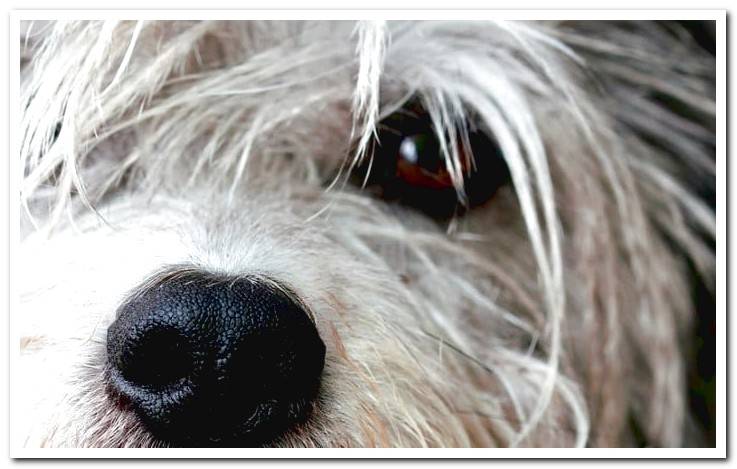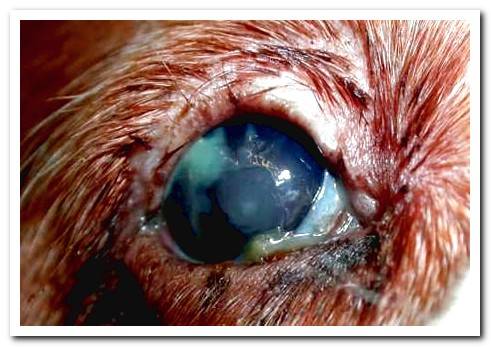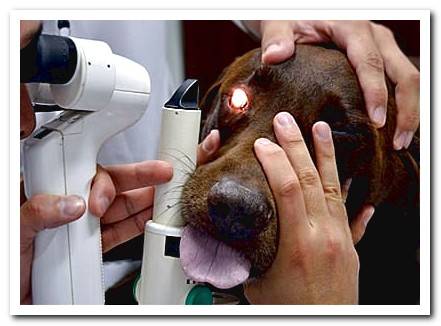
Also known as red eye, conjunctivitis is an inflammation of the connective membrane that surrounds the back of the eyelids and the surface of the eyeball to the cornea.
It is a relatively common condition that is due to different causes. It is characterized by the presence of a more or less thick discharge and needs veterinary treatment and good eye hygiene for it to remit. Let’s see in more detail everything related to this pathology.
Index of contents
- 1 Causes of conjunctivitis
- 1.1 Keratoconjunctivitis sicca
- 2 Symptoms of conjunctivitis in dogs
- 3 Types of conjunctivitis
- 3.1 Serous conjunctivitis
- 3.2 Follicular or mucoid conjunctivitis
- 3.3 Purulent conjunctivitis
- 4 What is the treatment for conjunctivitis?
- 5 Eye hygiene in conjunctivitis
Causes of conjunctivitis
If conjunctivitis affects both eyes, it is more likely to be caused by an allergic process or systemic disease, such as distemper, although it is rare for a well-vaccinated adult dog to contract this disease. But it can also be due to irritating substances.
On the other hand, if the involvement is limited to only one eye, the cause will be local, such as hair that grows against the eye and irritates it or the introduction of a foreign body. Also, keratoconjunctivitis sicca is a common cause of conjunctivitis in dogs.
Keratoconjunctivitis sicca
It is a mucous discharge that may not be due to conjunctivitis, but to a disorder called keratoconjunctivitis sicca. In this case the problem is due to an inadequate discharge of tears.
Symptoms of conjunctivitis in dogs
Conjunctivitis can occur in one or both eyes. In general, it is not a painful process, so if we notice that the dog keeps its eye closed and is in pain, it may be suffering from other more serious disorders such as keratitis, uveitis or glaucoma. If left untreated they can progress to blindness.
The symptoms of conjunctivitis are:
- Redness of the eye.
- Discharge, which can be serous and clear, mucous or purulent.
- Other symptoms may appear depending on the type of conjunctivitis that the dog suffers.

Types of conjunctivitis
Depending on the secretion, it is possible to distinguish several types of conjunctivitis, which are serous, follicular and purulent. Therefore, paying attention to the appearance of eye discharge makes it easier for us to discover its cause.
Serous conjunctivitis
In this type of conjunctivitis the inflammation and the redness are slight. The secretion that originates is watery and transparent. It is the typical conjunctivitis that can appear due to irritation.
A strong wind, an environment with very low temperatures, dust or any other substance that is an allergen for the dog can cause this conjunctivitis. In the latter case, there is talk of allergic conjunctivitis and it is accompanied by itching. This causes the dog to rub its face with its paws or against objects or people.
Follicular or mucoid conjunctivitis
In this conjunctivitis the mucous glands that are in the internal area of the nictitating membrane are affected by various causes, such as an irritant or an infection.
Due to this, the surface they occupy becomes irregular and, in turn, irritates the eye, producing mucoid secretion. Even though the trigger is treated, the uneven surface remains, irritating the eye chronically.
Purulent conjunctivitis
Its onset is a serous conjunctivitis that is infected by the presence of bacteria. Among these are the Streptococcus and the Staphylococcus. The conjunctiva will be very red and inflamed. The discharge contains mucus and pus and is very thick, so that it reaches to cover the eyelids, forming crusts.

What is the treatment for conjunctivitis?
The most important thing is to discover the triggering cause in order to correct it. Only the vet can tell us what kind of conjunctivitis we are dealing with. The lighter serous can be controlled with cleaning 3-4 times a day with the sterile eye drops indicated by the vet. Some dogs worsen and progress to purulent conjunctivitis.
For follicular conjunctivitis the vet usually prescribes an eye ointment with antibiotics and corticosteroids. If there is no response, the cauterization of the mucous gland follicles can be used to destroy them. For its part, treating purulent conjunctivitis involves completely cleaning eye secretions and scabs and using an antibiotic.
Dogs usually get better fast, but the treatment must be followed all the prescribed time to avoid resistance and relapses. If there is no improvement, a sample should be taken to perform a bacterial culture and adjust the treatment. Finally, if the dog frequently suffers from conjunctivitis or does not remit, it must be assessed that it is due to dry keratoconjunctivitis.
Canine conjunctivitis not contagious to humans, but purulent conjunctivitis that is caused by bacteria, if it is contagious between dogs. So it is advisable to keep our dog away from his canine friends while he is treated.
Eye hygiene in conjunctivitis
To apply any drug it is important that the eye is as clean as possible. This ensures that the medication penetrates well and thus fulfills its effect. Therefore, before medicating, both secretions and crusts attached to the eyelids must be removed.
We can do it by moistening a gauze or a cotton ball with saline or, simply, water. We will gently clean from the inside out, using a different gauze for each eye.
If the crusts are very close they will work better with the serum or warm water. With the eye as clean as possible it is time to apply the medication that the vet has prescribed for us. We will repeat the cleaning before medicating while the secretion persists.
